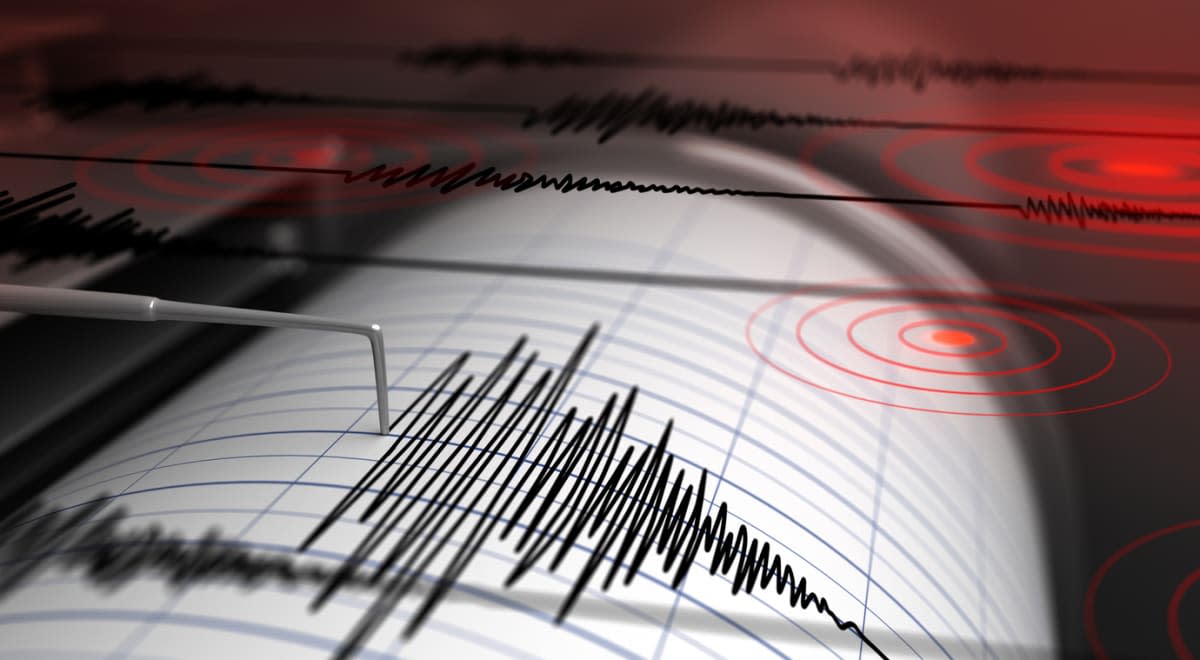Are Earthquakes Increasing in Number? What's the Largest Quake on Record? 22 Fascinating Earthquake Facts

Where most earthquakes take place, how long a quake typically lasts and more.
Earthquakes are one of the most powerful and devastating forces of nature. This type of natural catastrophe is as destructive as it is fascinating, and we have 22 facts about earthquakes that prove it.
Unfortunately, earthquakes have been in the news more frequently in recent weeks—with tragic events occurring in Turkey and Syria not only on Feb. 6 (the area's "worst earthquake in modern history"), but again in Turkey, just two weeks later, on Feb. 20.
If you've wondered how often earthquakes occur around the world, or if the weather plays a role in this specific phenomenon, we've got you covered. Curious about where most earthquakes take place? The states with the fewest earthquakes? We've got it all here.
Related: All the Ways You Can Help Victims of the Earthquake in Turkey and Syria
22 Fascinating Facts About Earthquakes
1. The largest recorded earthquake in the United States
The largest recorded earthquake in the United States (magnitude 9.2) struck Prince William Sound, Alaska, in March 1964.
2. The largest recorded earthquake in the world
The largest recorded earthquake in the world (magnitude 9.5) in Chile in May 1960.
3. Moonquake occurrences
"Moonquakes" are like earthquakes, but take place on the moon—they occur less frequently and with less intensity than they do here.
4. How often earthquakes occur
"On average, magnitude 2 and smaller earthquakes occur several hundred times a day worldwide," according to the Seismological Facility for the Advancement of Geoscience. "Major earthquakes, greater than magnitude 7, happen more than once per month. 'Great earthquakes', magnitude 8 and higher, occur about once a year."
5. Epicenter of an earthquake
An "epicenter" is defined as "the part of the earth's surface directly above the focus of an earthquake."
6. Where most earthquakes take place
90 percent of the world's earthquakes take place within the 40,000-kilometer path along the Pacific Ocean known as the "Ring of Fire," AKA the Circum-Pacific belt.
7. Plate boundaries and tectonic plates
The earth is made up of about 20 tectonic plates, and where they meet is called a "plate boundary." When plates grind into each other, earthquakes can occur.
8. Seiches caused by earthquakes
Earthquakes may cause seiches, which is when water is pushed "from one end of a body of water to the other. When the wind stops, the water rebounds to the other side of the enclosed area. The water then continues to oscillate back and forth for hours or even days."
9. Weather doesn't seem to play a role in earthquakes
"Statistically, there is an equal distribution of earthquakes in cold weather, hot weather, rainy weather, etc.," according to the United States Geological Survey.
10. Alaska's earthquake history
Four of the top 20 largest earthquakes in the world took place in Alaska.
Related: 'I Will Fear No Evil' —20 Prayers for Protection During Life's Difficult Circumstances
11. States in the U.S with the least amount of earthquakes
The fewest amount of earthquakes in the United States take place in Florida and North Dakota.
12. On this day...
You can select any month and day on the U.S. Geological Survey's website and see what past earthquakes happened on that day in history.
13. Studying earthquakes
Those who study earthquakes are geophysicists.
14. How long an earthquake typically lasts
Most earthquakes last only 10-30 seconds.
15. Deadliest earthquake on record
Of the earthquakes recorded in the last 4,000 years, the deadliest on record took place in China in January 1556—killing an estimated 830,000 people.
16. Chilean earthquake of 1960
The seismic waves from this quake shook the earth for several days—something known as "the free oscillation of the Earth."
17. 2010's earthquake in Haiti
A staggering number of 316,000 people were estimated as dead following this magnitude 7.0 quake—the deadliest in recent years.
18. Turkey and Syria's earthquake in 2023
This February, the earthquake that struck Turkey and Syria was magnitude 7.8 and killed more than 20,000 people.
19. Earthquakes in Greek mythology
In Ancient Greece, it was believed that earthquakes were caused by Poseidon.
20. Aftershocks
An aftershock (defined as "a minor shock following the main shock of an earthquake") happens in the hours and days following an earthquake, with larger earthquakes typically producing larger aftershocks. One of the most notable happened in China in 1976 when a magnitude 7.1 aftershock occurred just hours after a magnitude 7.5 earthquake.
21. Earthquakes increasing in number
There is an increasing number of earthquakes recorded each year, but that has to do with having more seismic instruments that are able to record these phenomena. However, the United States Geological Survey also says, "According to long-term records (since about 1900), we expect about 16 major earthquakes in any given year. That includes 15 earthquakes in the magnitude 7 range and one earthquake magnitude 8.0 or greater. In the past 40-50 years, our records show that we have exceeded the long-term average number of major earthquakes about a dozen times."
22. Staying up-to-date on earthquake activity
There is a map from the United States Geological Survey that you can check out to stay updated on the most recent earthquakes magnitude 2.5+ around the world.
Next, Looking Ahead—100 Quotes on Strength and Resilience To Help Get Us Through Tough Times

